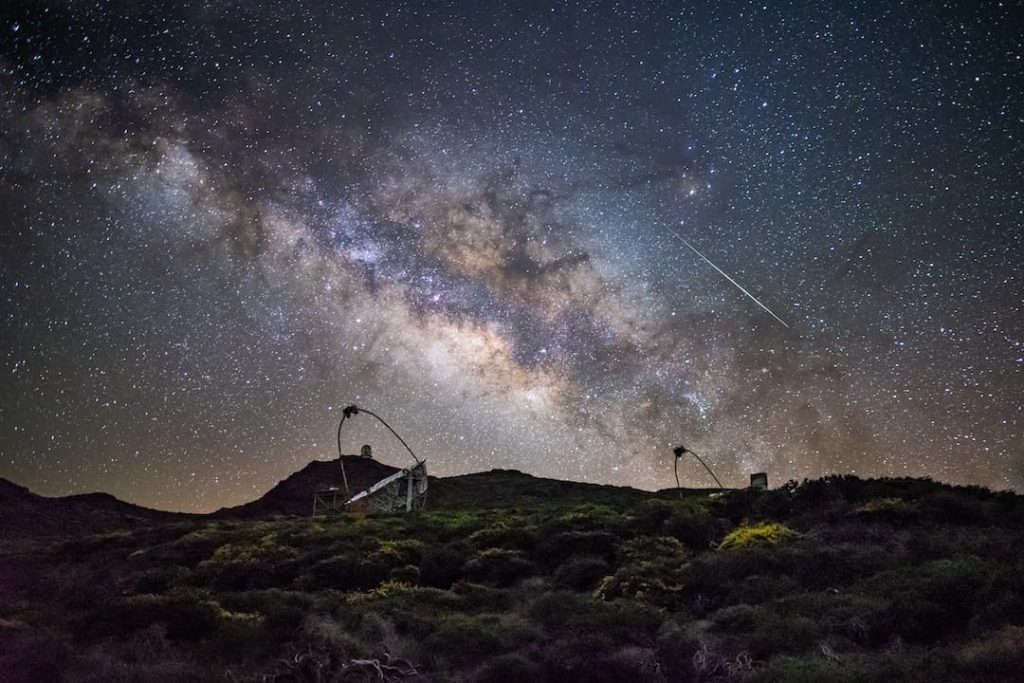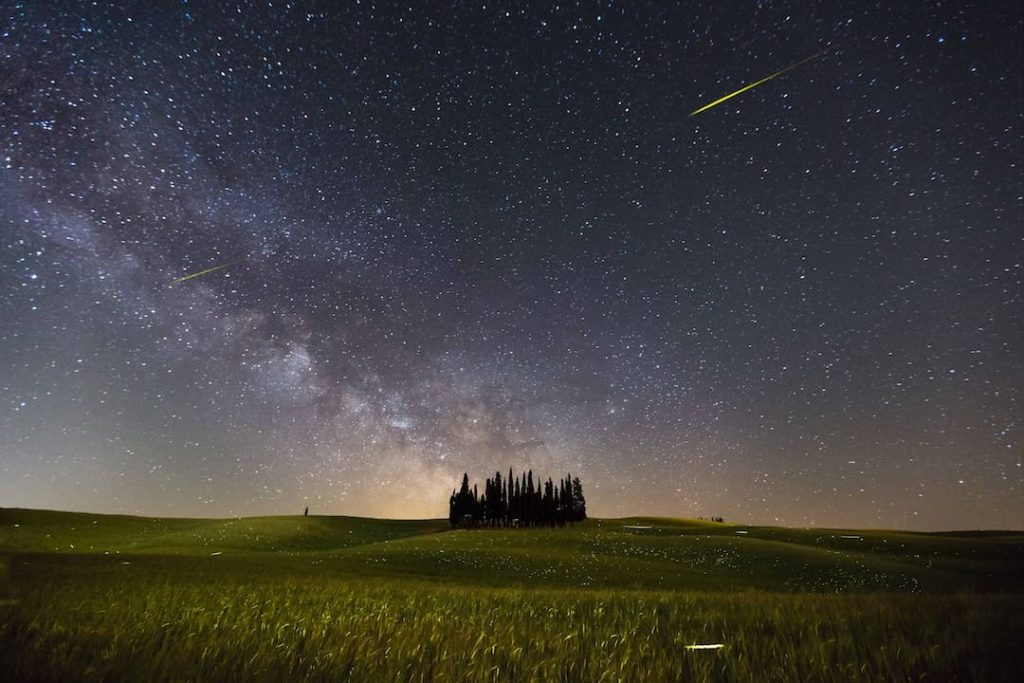Showered across a velvet sky like a can of spilt talc, witnessing the Milky Way—the star-dusted center of our galaxy and solar system—from Earth feels like nothing short of a miracle. A natural pursuit which reconnects us with the universe, improves our circadian rhythm and reminds us just how small we really are, stargazing in Europe is an absolute joy for anyone aged one to a hundred and one.
While astro-tourism is rocketing in popularity across the globe, the unrelenting spread of urbanization and its resulting light pollution means there are fewer places on earth where we can see these starry celestial skies in all their infinite glory.
Luckily, the International Dark Sky Association has honored more than a dozen Dark Sky Parks across Europe. On a good clear night, you can easily see constellations, shooting stars and other nebulae with the naked eye. However, having an expert astronomer on hand with a professional piece of kit means cosmic tourists can get up close and personal with fiery planets, see meteor showers and even glance at the Andromeda Galaxy, which lies a staggering 2.5 million light years away.
From La Palma to Hungary, here’s our favourite stargazing spots in Europe for an out-of-this-world adventure
La Palma, Canary Islands
Shaped like a diamond, the tiny volcanic island of La Palma fringed with black sand beaches is famously home to the darkest skies in Europe. Designated the world’s first Unesco Starlight Reserve, La Palma is one of the best destinations on the planet for stargazing with its inky black skies shimmering like a disco ball from as early as 7pm.
An island heralded for its hiking adventures, there are several astral viewing points dotted across the island, including Roque de los Muchachos Observatory on La Palma’s highest peak. Perched 2400m above sea level, the observatory houses the largest telescope in the world–the Gran Telescopio Canarias–whose 32-feet-wide lens can capture black holes, distant planets and galaxies from the early universe.
Westhavelland Nature Park, Germany
Germany’s first Dark Sky Park, Westhavelland Nature Park in Brandenburg is the best place for a cosmic adventure. Located an easy two-hour drive west of Berlin, it makes a great add-on adventure to a city break. An International Dark Sky Reserve since 2014, the darkest skies are found between the small towns of Gülpe and Nennhausen, both of which have minimal light pollution.
By day, you can canoe down the River Havel and spot beavers, otters, and white-tailed eagles. Come nightfall, grab a map, and embark on a self-guided stargazing adventure. Encompassing nine observation points, you can witness the dusty shower of the Milky Way, pick up the sparkles of Orion’s Belt, and the furry ears of the Great Bear a.k.a. Ursa Major all with a naked eye. Alternatively, local astronomers host regular guided tours of the night sky, as well as night walks and astrophotography sessions.

Hella, Iceland
Remote plains, ice-crisp air and sooty, unpolluted skies, Iceland is renowned for its celestial appeal. Regarded as one of the best places in south Iceland to witness the Northern Lights, Hella’s crystalline skies are ripe for a stargazing adventure. Take a tour of Iceland’s legendary Golden Circle, a 190-mile driving route which takes in the country’s top three natural wonders, Þingvellir National Park, Gullfoss waterfall and Geysir geothermal area.
Stay at Hotel Rangá, a log cabin specifically designed for stargazers and aurora hunters. With the most advanced telescopes in Iceland, the Rangá Observatory astronomers offer guided tours across the cosmos each night as they track stars, planets and nebulae. Book an organized adventure to Hella between September and April and you’ll have the best chance of seeing the aurora borealis, the ethereal ribbons of green light dancing across the skies.

Haunte-Pyrénées, France
Tucked away between France and Spain, this tour of the Haute-Pyrénées encapsulates part of the largest International Dark Sky Reserve in Europe. Sitting at nearly 10,000 feet above sea level, the 19th-century Pic du Midi observatory is one of the best places for stargazing in Europe. Accessible to everyone via cable car, it features the magnificent Gentilli dome telescope, which was installed by NASA in the Sixties to map the moon prior to the Apollo missions. It also houses the highest planetarium in Europe in the historic Baillaud dome.
Amateur astronomers can book an overnight stargazing adventure at the summit, including dinner and an expert guide to walk you through the night sky. It’s the perfect spot to marvel at the Milky Way, count constellations and see the ethereal glow of zodiacal light as the earth slowly turns on its axis.

Tuscany, Italy
The birthplace of legendary astronomer, Galileo, Tuscany is probably the most appropriate place to go stargazing in Italy. Translucent skies and low light pollution, the area’s rolling hills, rural farms and hilltop villages make night time viewing a celestial delight. Book a self-drive Tuscany Escape and wind through the region’s heavenly scenery stopping in Chianti, Florence and Pisa.
Visit the Arcetri Astrophysics Observatory in the hills surrounding Florence and witness lunar craters, fiery planets and Jupiter’s many moons through the historic Amici telescope. From June through to August, Tuscany’s Chianti Observatory hosts regular stargazing nights with English-speaking astronomers who will guide you through constellations, nebulae and planets using their research-level telescopes.
Hortobágy National Park
A Unesco World Heritage Site and Hungary’s first national park, the dark lucid skies above Hortobágy–which translates as ’where the sky touches the ground’–have barely changed since the Ice Age. An International Dark Sky Park since 2011, Hortobágy’s vast untouched landscapes, part of the Great Hungarian Plain, are fiercely protected by lighting regulations making it one of the finest stargazing experiences in the country.
Alongside a tailor-made Hungary adventure, add on a trip to Hortobágy National Park. The Field Study Center and observatory offer guided stargazing walks led by astro-experts who help unravel the mysteries of the galaxy as they guide you through constellations, planets, and galaxies of the celestial world.





